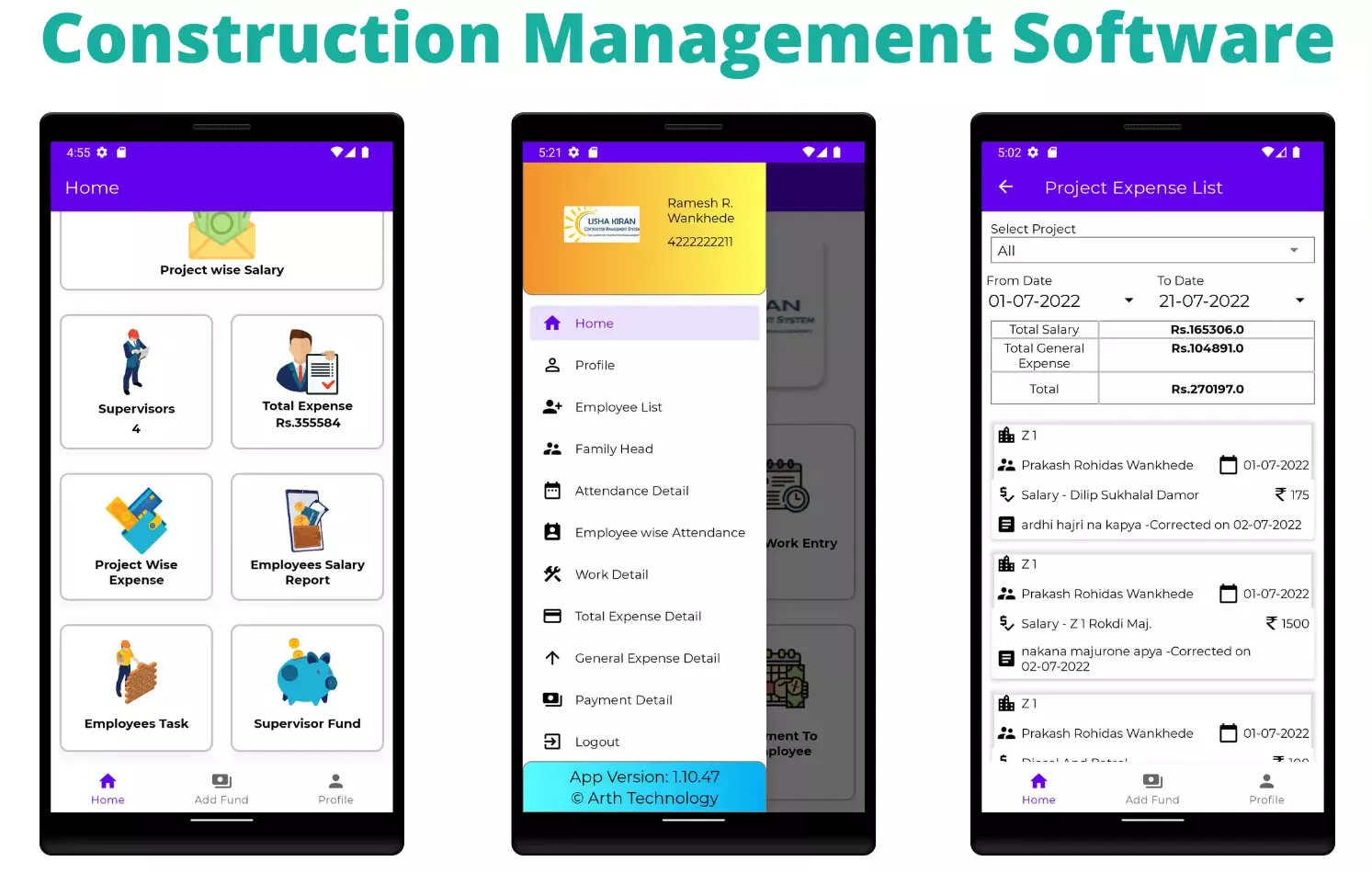Cutting-Edge Construction Management Software for Modern Builders
Cutting-Edge Construction Management Software for Modern Builders
Blog Article
Customized Building Administration Software Application: Optimizing Resource Allotment and Budgeting Strategies
In the realm of modern building management, the relevance of tailored software program services can not be overemphasized. These advanced tools offer a nuanced strategy to enhancing resource appropriation and budgeting approaches, essential parts for successful project implementation. By diving into the details of exactly how such software can improve resource allocation approaches and improve spending plan optimization strategies, a clear pathway toward increased project effectiveness arises. In this digital age where precision and effectiveness regime supreme, discovering the effect of tailored building and construction management software program on these important aspects discovers a world of possibilities that can shape the future of the sector.
Advantages of Tailored Software Program Solutions
Tailored software services supply a myriad of benefits to building and construction administration firms seeking to enhance performance and simplify procedures. By tailoring software solutions to address task administration, scheduling, budgeting, and resource appropriation, companies can enhance their workflows and achieve better efficiency.
One more benefit of tailored software application services is the capacity to give real-time understandings and analytics. Construction management companies can leverage data-driven decision-making to monitor task development, identify traffic jams, and make adjustments promptly. This positive method boosts job outcomes and assists firms remain on track with timelines and budgets.

Improved Source Allotment Approaches
Applying reliable source appropriation approaches is crucial for construction management companies to maximize task end results and maximize performance. By leveraging building and construction monitoring software program that uses real-time monitoring and reporting functions, firms can dynamically adjust appropriations as task requires progress, leading to enhanced efficiency and cost-effectiveness. construction software.
Moreover, improved resource appropriation techniques allow construction companies to determine and deal with possible traffic jams or resource restraints proactively. By carrying out regular analyses of resource utilization and efficiency metrics, managers can make data-driven choices to redistribute resources successfully and avoid hold-ups. This aggressive method not just improves project timelines yet likewise minimizes the threat of budget overruns as a result of inefficient source allotment.
Spending Plan Optimization Techniques
To attain optimal economic efficiency in building and construction jobs, reliable budget optimization strategies play a pivotal function in ensuring expense control and project success. One crucial technique is the view publisher site facility of a detailed job spending plan that assigns sources based upon priority and important needs. By plainly specifying the scope of work, establishing practical cost quotes, and continually monitoring costs, building browse around this web-site and construction supervisors can identify prospective price overruns early on and take corrective actions. In addition, implementing value engineering methods can aid simplify project costs without jeopardizing high quality. This entails analyzing each project component to determine chances for expense financial savings while keeping efficiency criteria. Furthermore, leveraging historical data and market criteria allows building supervisors to make educated choices regarding budget plan appropriations and recognize locations where investing can be maximized. By integrating these budget optimization techniques right into building and construction monitoring software application, job stakeholders can improve financial preparation, source appropriation, and general budget plan management to drive project success and productivity.

Effect On Project Performance
Optimizing building and construction administration software can dramatically improve project effectiveness by streamlining interaction, improving cooperation, and helping with data-driven decision-making. By systematizing project details, stakeholders can easily access real-time updates, minimizing delays brought on by miscommunication or obsolete data. Boosted collaboration functions make it possible for staff member to work together flawlessly, regardless of their physical place, cultivating a more natural and effective workplace. In addition, construction administration software program can provide useful understandings via data analytics, enabling job supervisors to make informed decisions rapidly and precisely.
Moreover, the automation of routine jobs such as organizing, spending plan monitoring, and source appropriation can maximize beneficial time for task groups to concentrate on important tasks, eventually accelerating job shipment. The ability to keep track of project development in real-time and determine potential bottlenecks enables aggressive analytical, stopping problems from escalating and causing hold-ups. Generally, the effect of tailored building and construction these details monitoring software application on project efficiency is obvious, using a competitive advantage by maximizing process and taking full advantage of productivity.
Future Trends in Building And Construction Software Program
As the building industry proceeds to develop, advancements in modern technology are shaping the future landscape of construction software application services. One substantial pattern coming up is the boosting integration of fabricated intelligence (AI) and equipment knowing capabilities in building software. These innovations have the potential to reinvent how building tasks are managed by making it possible for predictive analytics, automated decision-making processes, and boosted project understandings.
Another future pattern in building and construction software is the growing focus on cloud-based solutions. Cloud modern technology offers enhanced adaptability, scalability, and ease of access for building and construction groups, permitting real-time cooperation and data sharing across job stakeholders. This change in the direction of cloud-based software is expected to boost task efficiency, enhance interaction, and improve overall job results.
In addition, the surge of Building Information Modeling (BIM) is expected to proceed forming the building and construction software landscape. BIM software helps with 3D modeling, visualization, and data administration, causing boosted task coordination, lowered mistakes, and improved task results. Accepting these future trends in construction software will certainly be important for business seeking to remain affordable and drive advancement in the market.
Verdict
To conclude, customized building management software program supplies many benefits such as boosted source allotment methods and spending plan optimization methods. This software has a substantial effect on project performance by enhancing processes and boosting general performance (construction mangement software). As modern technology remains to breakthrough, future patterns in construction software application are expected to more optimize source allotment and budgeting approaches for building tasks
Report this page